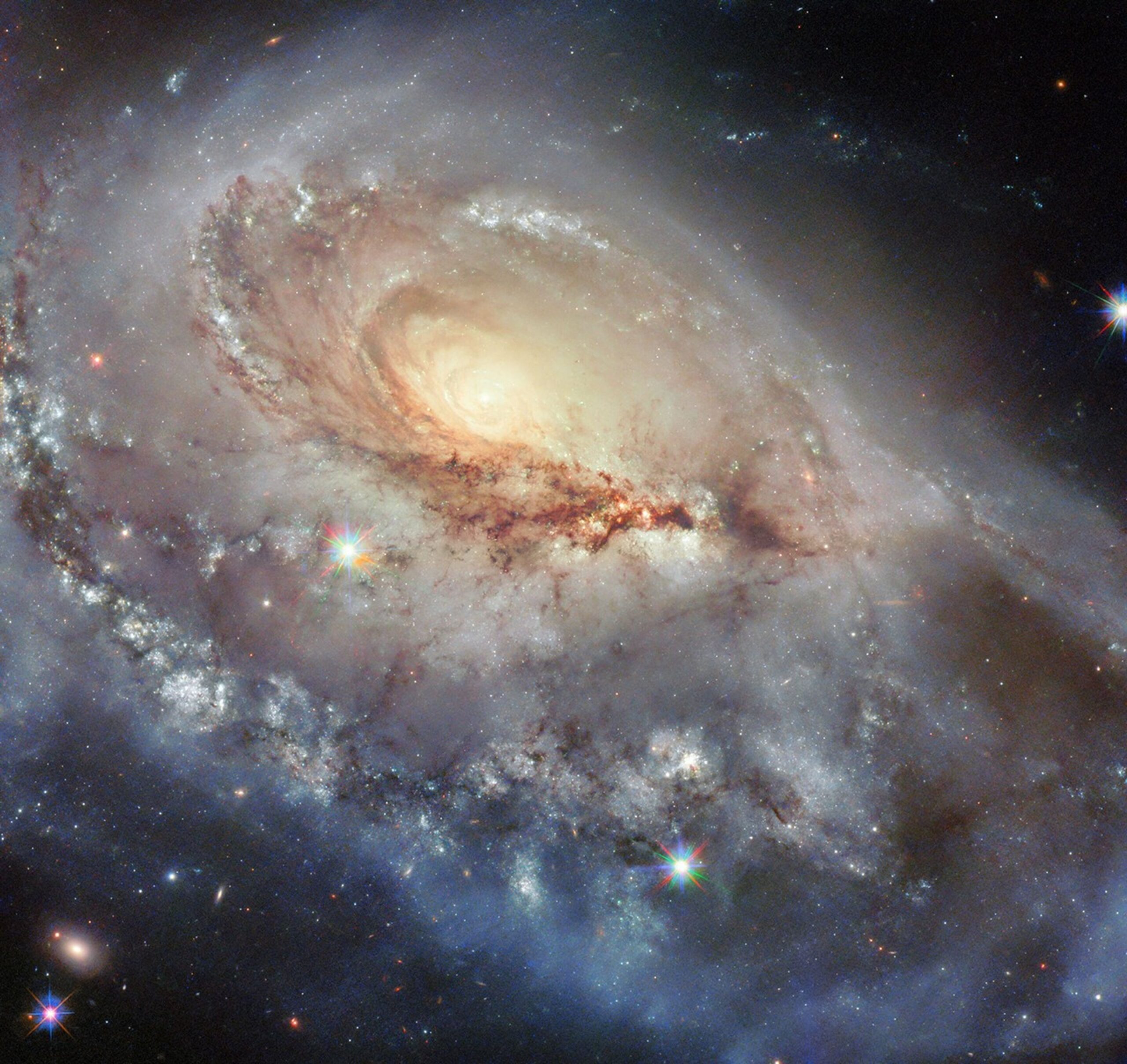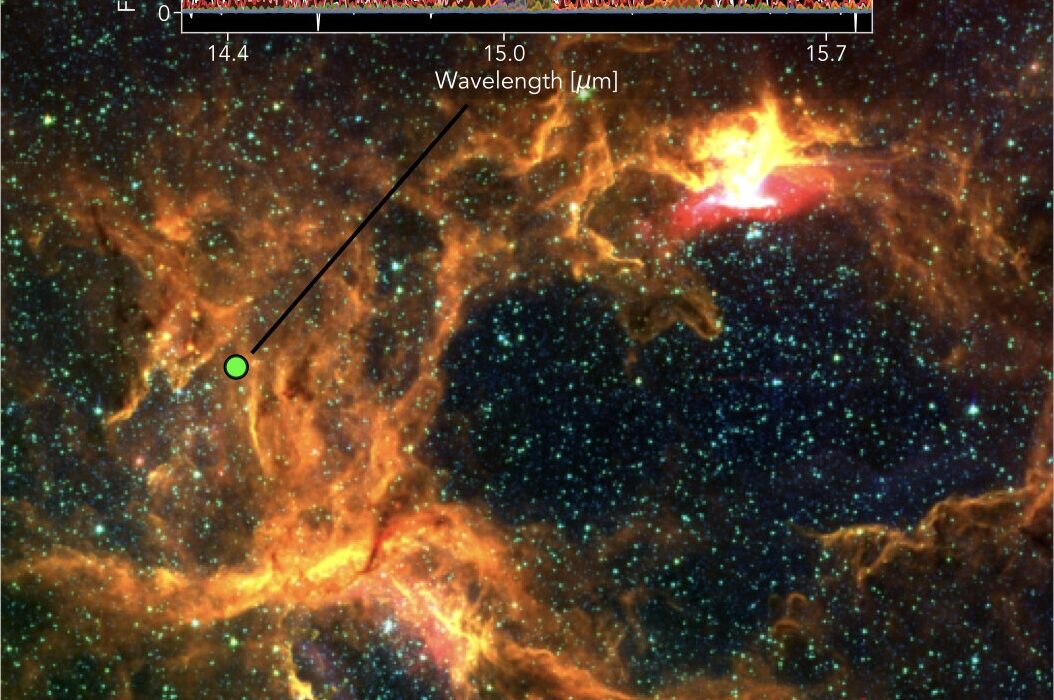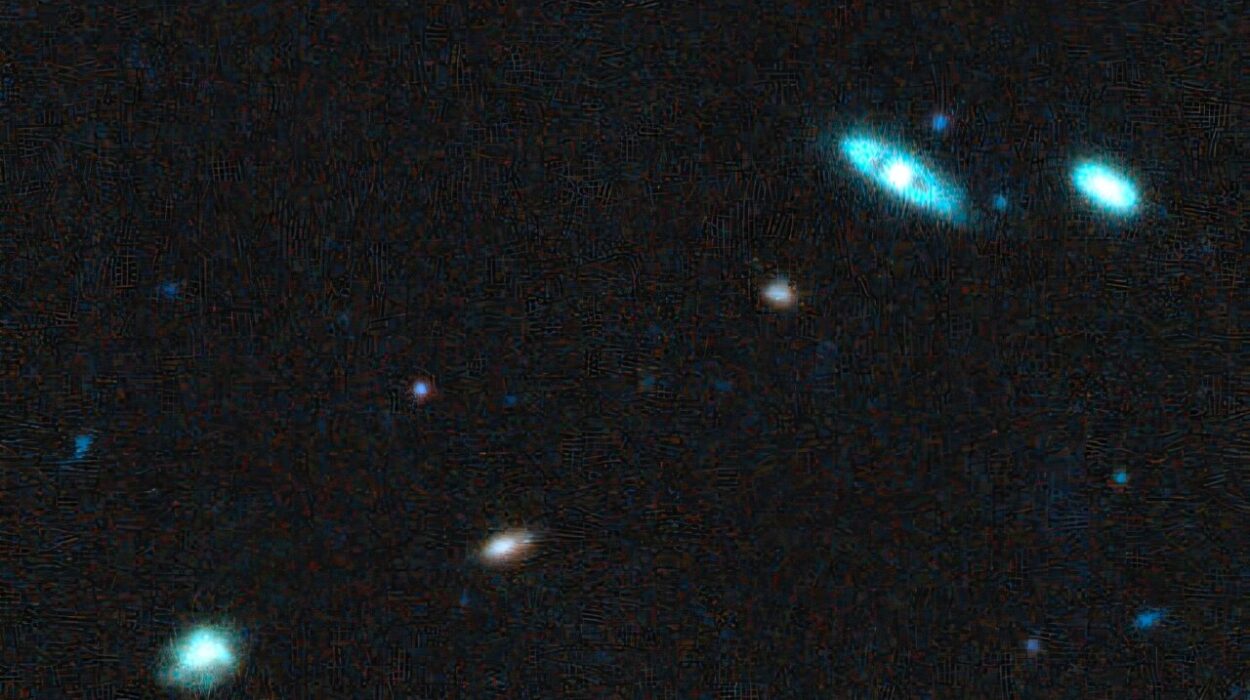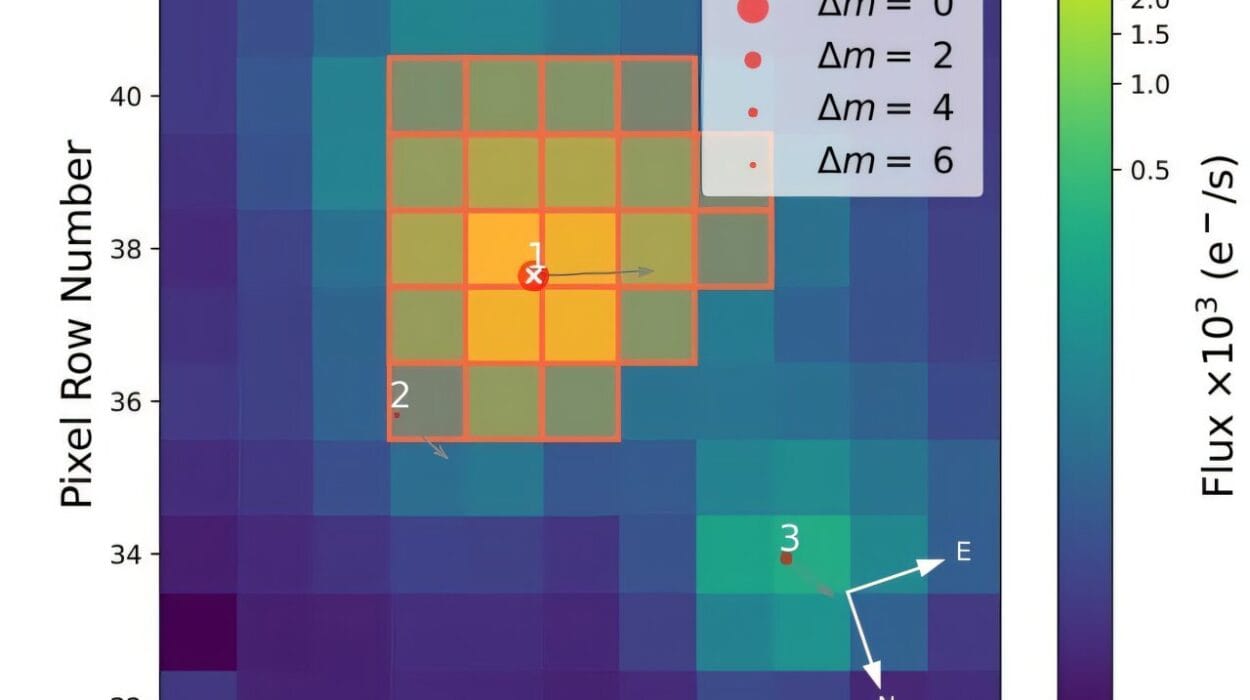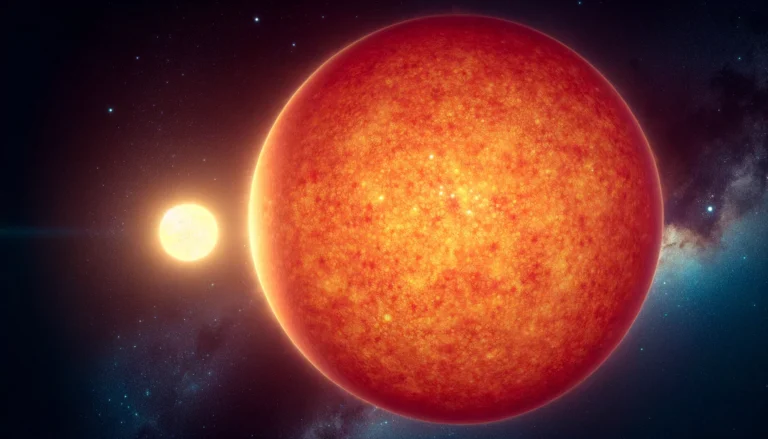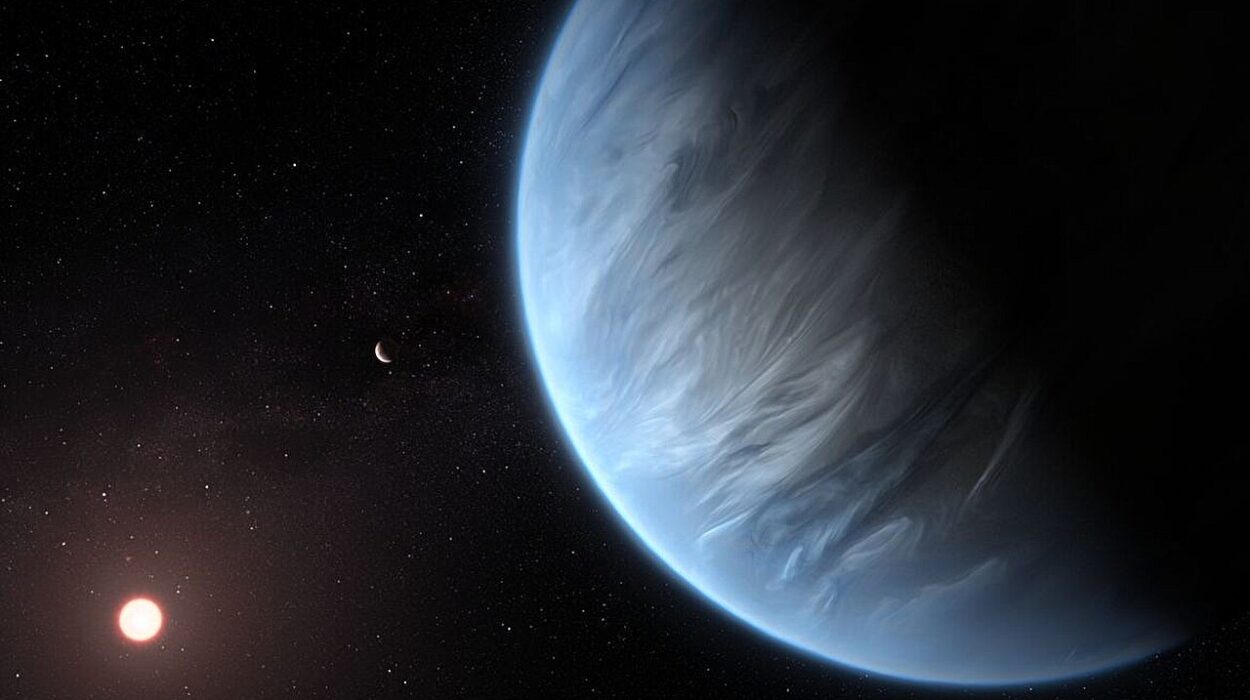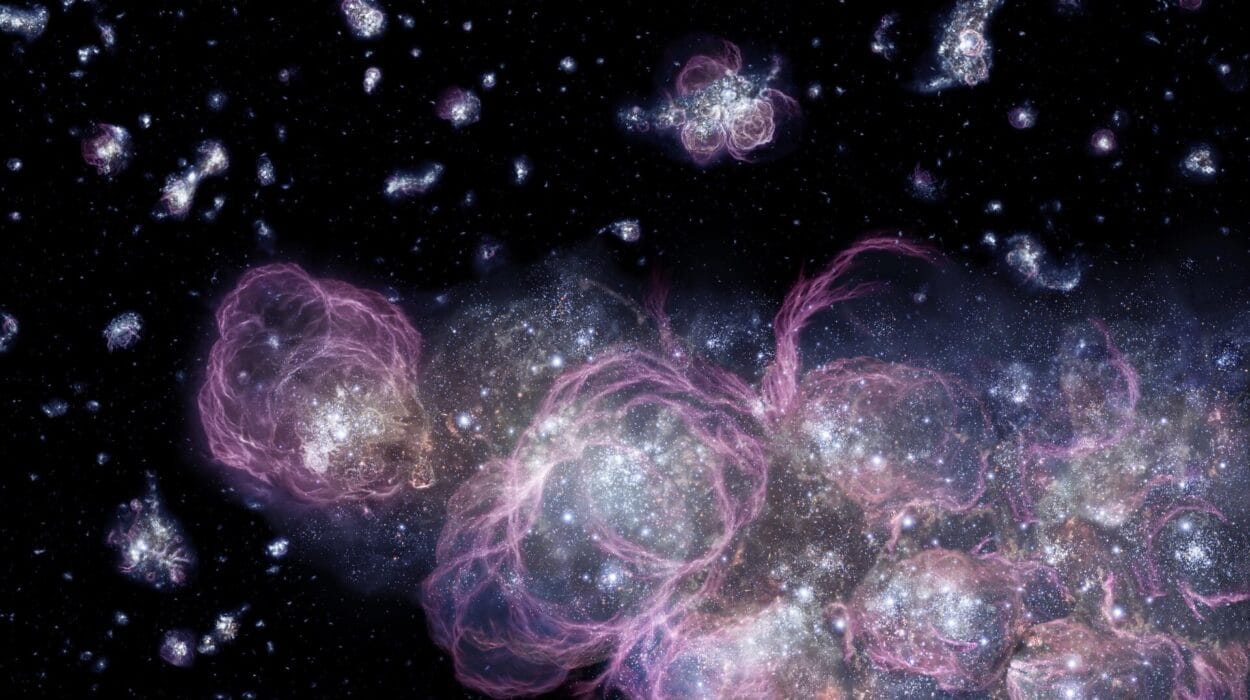Suspended in the inky darkness of the universe, a strikingly lopsided spiral galaxy dazzles like a celestial pinwheel with a twist. This is Arp 184—also known as NGC 1961—a hauntingly beautiful galaxy captured in sharp detail by the NASA/ESA Hubble Space Telescope. Located about 190 million light-years away in the obscure northern constellation Camelopardalis, or “The Giraffe,” Arp 184 is a luminous spectacle—elegant in form, yet curiously asymmetric.
Unlike the grand-design spirals we often associate with classic galactic symmetry, Arp 184 stands apart, with one broad, luminous arm of stars dramatically stretched in our direction. It’s as if the galaxy is reaching out across space. Meanwhile, its far side is sparse and subdued, adorned only with faint wisps of gas and a scattering of stars—giving it a distorted, off-balance appearance. This imbalance is no flaw. Rather, it is a cosmic signature of chaos—a sign that something dramatic may have shaped it.
The name “Arp 184” hails from the Atlas of Peculiar Galaxies, an influential 1966 catalog assembled by astronomer Halton Arp. This catalog is no ordinary inventory. It celebrates the oddballs of the cosmos—galaxies that defy neat classification. Some are warping under gravitational interactions, others are shredded remnants of ancient collisions. What binds them is their uniqueness—and Arp 184 fits right in.
What could have carved such a strange shape into this galaxy? Astronomers suspect galactic interactions. Arp 184 may have recently merged with or brushed past another galaxy, twisting its spiral structure and triggering intense waves of star formation. It’s a cosmic choreography—a gravitational dance that leaves behind scars and stellar fireworks. These tumultuous encounters can also funnel gas toward galactic centers, feeding supermassive black holes or setting the stage for brilliant stellar deaths.
Indeed, Arp 184 has proven itself a lively arena for cosmic drama. In the past thirty years alone, four supernovae have erupted within its spiraling embrace—stellar explosions so powerful they briefly outshine entire galaxies. These events make Arp 184 not only beautiful but scientifically invaluable. It has become a target of interest for multiple Hubble Snapshot programs—brief, opportunistic imaging sessions that capitalize on short gaps between longer observations.
One such program specifically zeroed in on galaxies from Arp’s peculiar catalog and from a southern sky counterpart compiled by Arp and Barry Madore. Another pair of Snapshot programs investigated explosive cosmic events like tidal disruption events—cataclysmic phenomena where a wayward star strays too close to a supermassive black hole and is torn apart in a violent gravitational embrace.
By pooling data from these three programs, Hubble’s camera reveals Arp 184 in breathtaking detail—its star-studded arc, its gossamer trails, its glowing core. But the image does more than captivate the eye; it tells a story of motion, collision, and rebirth. In its skewed form lies evidence of the dynamic, sometimes violent life cycles that govern galaxies across the universe.
In the end, Arp 184 is a visual paradox: a galaxy that is both disturbed and dazzling, asymmetrical yet mesmerizingly graceful. It reminds us that in the vastness of space, beauty often blooms not in perfection, but in chaos—and that even the strangest galaxies have their own exquisite order.
